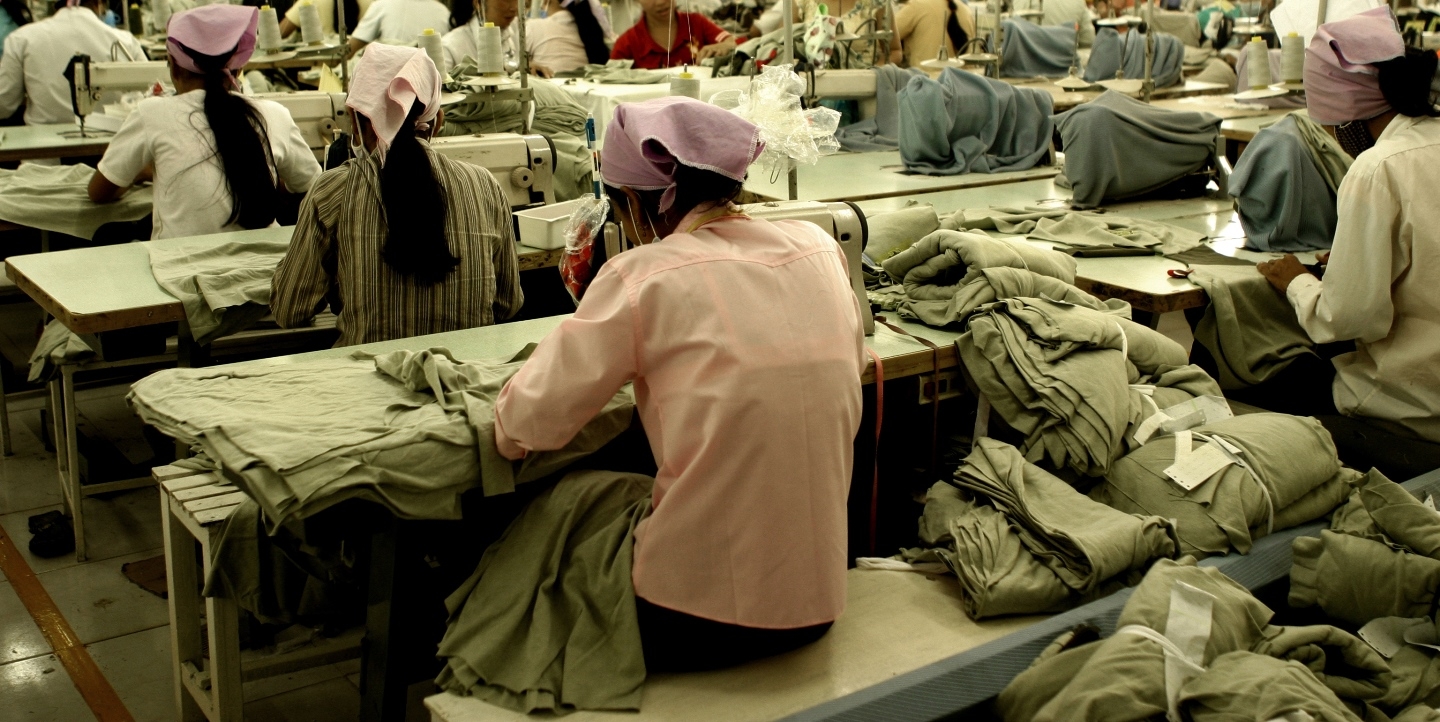11 Facts About Sweatshops

Welcome to DoSomething.org, a global movement of millions of young people making positive change, online and off! The 11 facts you want are below, and the sources for the facts are at the very bottom of the page. After you learn something, Do Something! Find out how to take action here.
- A "sweatshop" is defined by the US Department of Labor as a factory that violates 2 or more labor laws.^[United States General Accounting Office. "Sweatshops in the U.S: Opinions on Their Extent and Possible Enforcement Options." GAO, 1988. Web Accessed February 19, 2014.]
- Sweatshops often have poor working conditions, unfair wages, unreasonable hours, child labor, and a lack of benefits for workers. Take a stand and protest: Ask your school to make its apparel under fair conditions. Sign up for Tighty Whitey Rally.^[United States General Accounting Office. "Sweatshops in the U.S: Opinions on Their Extent and Possible Enforcement Options." GAO, 1988. Web Accessed February 19, 2014.]
- In developing countries, an estimated 168 million children ages 5 to 14 are forced to work.^[International Labor Organization. "Global Estimates on Child Labour." International Labour Conference, 2013. Web Accessed March 2, 2014.]
- America has stronger labor laws than most undeveloped countries, but it is not free of sweatshop conditions. Many labor violations slip under the radar of the US Department of Labor.^[Bernhardt, Annette, Ruth Milkman, Nik Theodore et al. "Broken Laws, Unprotected Workers: Violations of Employment and Labor Laws in America’s Cities." National Employment Law Project, 2009. Web Accessed February 19, 2014.]
- Products that commonly come from sweatshops are garments, cotton, bricks, cocoa, and coffee.^[Bureau of International Labor Affairs. "List of Products Produced by Forced or Indentured Child Labor." US Department of Labor, 2014. Web Accessed February 19, 2014.]
- A study showed that doubling the salary of sweatshop workers would only increase the consumer cost of an item by 1.8%, while consumers would be willing to pay 15% more to know a product did not come from a sweatshop.^[Robert Pollin, Justine Burns, and James Heintz. "Global apparel production and sweatshop labour: can raising retail prices finance living wages?" Cambridge Journal of Economics, 2004. Web Accessed February 19, 2014.]
- Sweatshops do not alleviate poverty. The people who are forced to work must spend the majority of their paycheck on food for their families to survive.^[Elliott, Kimberly Ann and Richard B. Freeman. "White Hats or Don Quixotes? Human Rights Vigilantes in the Global Economy." National Bureau of Economic Research, 2003. Web Accessed February 19, 2014.]
- Child labor is especially common in agriculture (98 million, or 59% of child laborers work in agriculture), followed by services (54 million) and industry (12 million).^[Miller, John. "Why economists are wrong about sweatshops and the antisweatshop movement." Challenge: The Magazine of Economic Affairs, 2003. Web Accessed February 19, 2014.]
- The majority of child laborers are found in Asia and the Pacific. Sub-Saharan Africa has the highest prevalence, with one in five children in child labor.^[International Labor Organization. "Global Estimates on Child Labour." International Labour Conference, 2013. Web Accessed March 2, 2014.]
- According to one survey, more than 2/3 of US workers experienced at least one pay-related violation in the previous work week. Assuming a full-time, full-year work schedule, workers lose an average of $2,634 annually due to violations.^[nternational Labor Organization. "Global Estimates on Child Labour." International Labour Conference, 2013. Web Accessed March 2, 2014.]
- Because women make up 85 to 90% of sweatshop workers, some employers force them to take birth control and routine pregnancy tests to avoid supporting maternity leave or providing appropriate health benefits.^[Bernhardt, Annette, Ruth Milkman, Nik Theodore et al. "Broken Laws, Unprotected Workers: Violations of Employment and Labor Laws in America’s Cities." National Employment Law Project, 2009. Web Accessed February 19, 2014.]
GET INVOLVED
Make a difference in your community and add your vision to the future of our democracy
